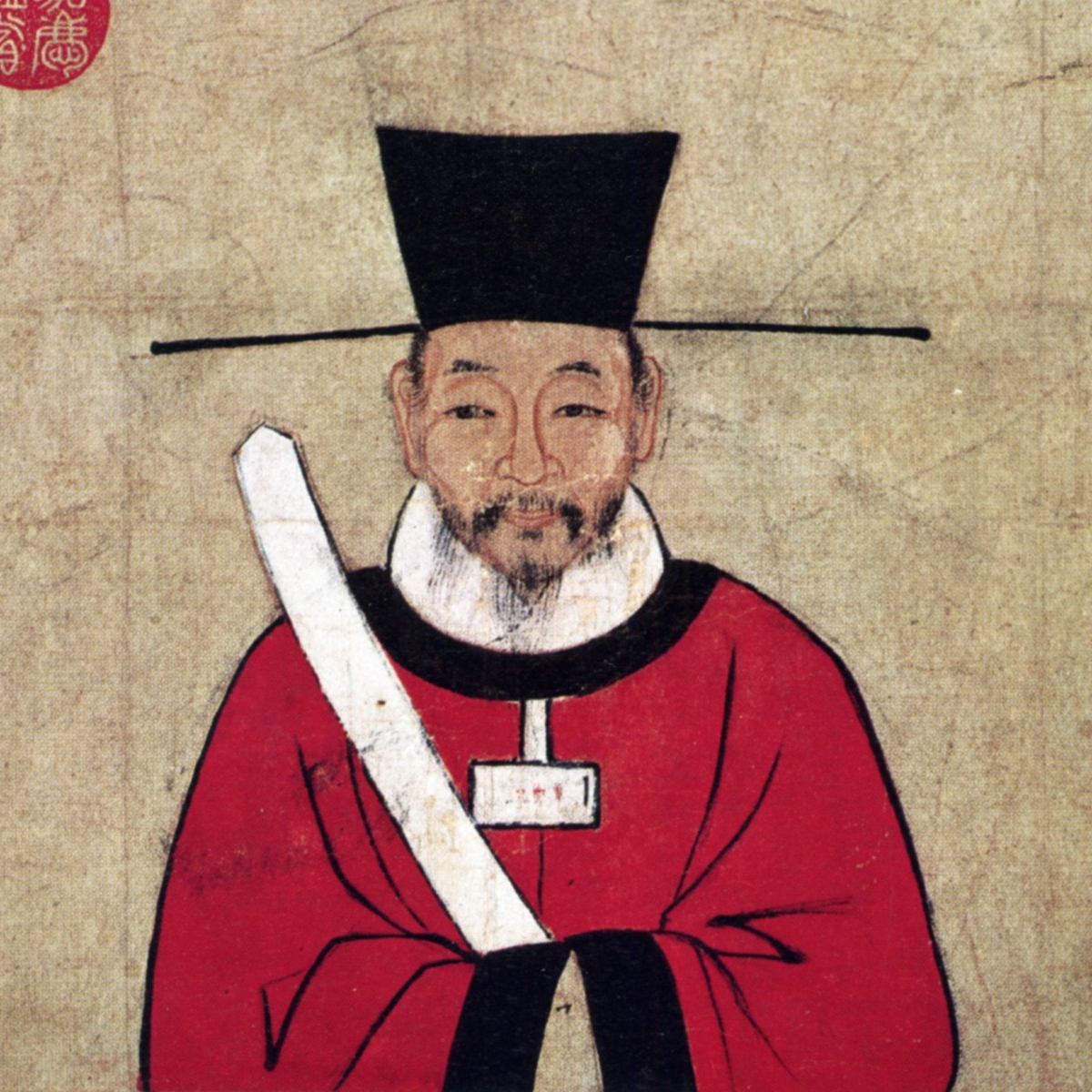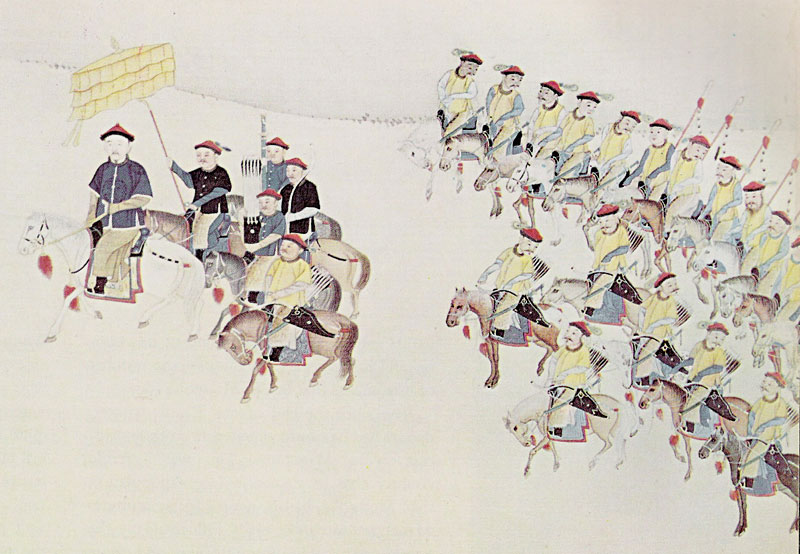|
Naming Taboo
A naming taboo is a cultural taboo against speaking or writing the given names of exalted persons, notably in China and within the Chinese cultural sphere. It was enforced by several laws throughout Imperial China, but its cultural and possibly religious origins predate the Qin dynasty. Not respecting the appropriate naming taboos was considered a sign of lacking education and respect, and brought shame both to the offender and the offended person. Types * The ''naming taboo of the state'' ( ''guóhuì'') discouraged the use of the emperor's given name and those of his ancestors. For example, during the Qin dynasty, Qin Shi Huang's given name Zhèng (< B-S: *''teŋ-s'') was avoided, and the first month of the year, the ''upright month'' (; ''Zhèngyuè'') had its pronunciation modified to ''Zhēngyuè'' (OC ... [...More Info...] [...Related Items...] OR: [Wikipedia] [Google] [Baidu] |
Taboo
A taboo is a social group's ban, prohibition or avoidance of something (usually an utterance or behavior) based on the group's sense that it is excessively repulsive, offensive, sacred or allowed only for certain people.''Encyclopædia Britannica Online''.Taboo. Encyclopædia Britannica Inc., 2012. Retrieved 21 Mar. 2012 Such prohibitions are present in virtually all societies. Taboos may be prohibited explicitly, for example within a legal system or religion, or implicitly, for example by social norms or conventions followed by a particular culture or organization. Taboos are often meant to protect the individual, but there are other reasons for their development. An ecological or medical background is apparent in many, including some that are seen as religious or spiritual in origin. Taboos can help use a resource more efficiently, but when applied to only a subsection of the community they can also serve to suppress said subsection of the community. A taboo acknowledged by a ... [...More Info...] [...Related Items...] OR: [Wikipedia] [Google] [Baidu] |
Ming Emperor Of Han
Emperor Ming of Han (15June 28 – 5September 75 AD), born and also known as and as , was the second Emperor of the Eastern Han dynasty. He was the fourth son and second crown prince of Emperor Guangwu. It was during Emperor Ming's reign that Buddhism began to spread into China. Emperor Ming was a hard-working, competent administrator of the empire who showed integrity and demanded integrity from his officials. He also extended Chinese control over the Tarim Basin and eradicated the Xiongnu influence there, through the conquests of his general Ban Chao. The reigns of Emperor Ming and his son Emperor Zhang were typically considered the golden age of the Eastern Han Empire and known as the Rule of Ming and Zhang. Family background Liu Yang was born in AD28 to Emperor Guangwu and his first love, Consort Yin Lihua. When Emperor Guangwu, was still an official under Gengshi Emperor, he had married Yin in 23. After he became emperor in 25, had wanted to make her empress, but she ... [...More Info...] [...Related Items...] OR: [Wikipedia] [Google] [Baidu] |
Li Shiji
Li Shiji (594?The ''Old Book of Tang'' indicated that Li Shiji was 75 at the time of his death, while the ''New Book of Tang'' indicated that Li Shiji was 85 at the time of his death. Compare ''Old Book of Tang'', vol. 67 with ''New Book of Tang'', vol. 93. The ''Zizhi Tongjian'', while not explicitly stating that Li Shiji was 75 at the time of his death, appeared to follow the ''Old Book of Tang'' by quoting Li Shiji as stating that he was satisfied with living almost to 80. See ''Zizhi Tongjian'', vol. 201. (The ''New Book of Tang'', containing apparently the same quote, had a slightly different version that had Li Shiji stating that he was satisfied with living ''over'' 80.) – December 31, 669), courtesy name Maogong, posthumously known as Duke Zhenwu of Ying, was a Chinese military general and politician who lived in the early Tang dynasty. His original family name was Xú, but he was later given the family name of the Tang imperial clan, Li, by Emperor Gaozu, the Tang ... [...More Info...] [...Related Items...] OR: [Wikipedia] [Google] [Baidu] |
Emperor Gaozong Of Tang
Emperor Gaozong of Tang (21 July 628 – 27 December 683), personal name Li Zhi, was the third Emperor of China, emperor of the Chinese Tang dynasty, ruling from 649 to 683; after January 665, he handed power over the empire to his second wife Empress Wu (the future Wu Zetian), and her decrees were carried out with greater force than the decrees of Emperor Gaozong's. Emperor Gaozong was the youngest son of Emperor Taizong of Tang, Emperor Taizong and Empress Zhangsun; his elder brothers were Li Chengqian and Li Tai. Emperor Gaozong's reign saw the primacy of Empress Wu, who became the effective power behind the Tang rule. Emperor Gaozong was aided in his rule by Empress Wu during the later years of his reign after a series of strokes left him incapacitated. Emperor Gaozong effectively after January 665 delegated all matters of state to his strong wife; after that Empress Wu acted as the power behind the emperor, "hanging the curtain and listening to politics" (''Chuílián tīn ... [...More Info...] [...Related Items...] OR: [Wikipedia] [Google] [Baidu] |
Emperor Taizong Of Tang
Emperor Taizong of Tang (28January 59810July 649), previously Prince of Qin, personal name Li Shimin, was the second emperor of the Tang dynasty of China, ruling from 626 to 649. He is traditionally regarded as a co-founder of the dynasty for his role in encouraging his father Li Yuan (Emperor Gaozu) to rebel against the Sui dynasty at Jinyang in 617. Taizong subsequently played a pivotal role in defeating several of the dynasty's most dangerous opponents and solidifying its rule over China proper. Taizong is considered to be one of the greatest emperors in China's history, and henceforth his reign became regarded as the exemplary model against which all future emperors were measured. His era, the "Reign of Zhenguan" () is considered a golden age in ancient Chinese history and was treated as required studying material for future crown princes. Taizong continued to develop imperial examination systems. He asked his officials to be loyal to policies, not people, in order to e ... [...More Info...] [...Related Items...] OR: [Wikipedia] [Google] [Baidu] |
Zizhi Tongjian
The ''Zizhi Tongjian'' (1084) is a chronicle published during the Northern Song dynasty (960–1127) that provides a record of Chinese history from 403 BC to 959 AD, covering 16 dynasties and spanning almost 1400 years. The main text is arranged into 294 scrolls (), each equivalent to a chapter—totaling around 3 million Chinese characters. In 1065, Emperor Yingzong of Song commissioned his official, Sima Guang (1019–1086), to lead a project to compile a Universal history (genre), universal history of China, and granted him funding and the authority to appoint his own staff. His team took 19 years to complete the work and in 1084 it was presented to Emperor Yingzong's successor Emperor Shenzong of Song. It was well-received and has proved to be immensely influential among both scholars and the general public. Endymion Wilkinson regards it as reference quality: "It had an enormous influence on later Chinese historical writing, either directly or through its many a ... [...More Info...] [...Related Items...] OR: [Wikipedia] [Google] [Baidu] |
Emperor Xuan Of Han
Emperor Xuan of Han (; 91 BC – 10 January 48 BC), born Liu Bingyi (劉病已), was the tenth emperor of the Han dynasty, reigning from 74 to 48 BC, and was one of the only four Western Han emperors to receive a temple name (along with Emperor Gaozu, Emperor Wen and Emperor Wu). During his reign, the Han dynasty prospered economically and militarily became a regional superpower, and was considered by many to be the peak period of the entire Han history. His time of rule, along with his predecessor Emperor Zhao's are known by historians as Zhaoxuan Restoration (昭宣中興). He was succeeded by his son Emperor Yuan after his death in 48 BC. Emperor Xuan's life story was a riches-to- rags-to-riches story. He was born a prince as a great-grandson of Emperor Wu. His grandfather Liu Ju, was a son of Emperor Wu and Empress Wei and the crown prince of the Han Empire, who in 91 BC was framed for witchcraft practice against Emperor Wu and committed suicide after being forced in ... [...More Info...] [...Related Items...] OR: [Wikipedia] [Google] [Baidu] |
Kangxi Emperor
The Kangxi Emperor (4 May 165420 December 1722), also known by his temple name Emperor Shengzu of Qing, personal name Xuanye, was the third emperor of the Qing dynasty, and the second Qing emperor to rule over China proper. His reign of 61 years makes him the longest-reigning emperor in Chinese history and one of the longest-reigning rulers in history. He is considered one of China's greatest emperors. The third son of the Shunzhi Emperor, Kangxi was enthroned at the age of seven while actual power was held for six more years by the four regents nominated by his father. After assuming personal rule, Kangxi's attempt to revoke the fiefdoms of feudal princes sparked the Revolt of the Three Feudatories, which he suppressed. He also forced the Kingdom of Tungning in Taiwan and Mongols in the north and northwest to submit to Qing rule, and launched an expedition that incorporated Tibet into the empire. Domestically, he initially welcomed the Jesuits and the propagation of ... [...More Info...] [...Related Items...] OR: [Wikipedia] [Google] [Baidu] |
Gate Of Divine Might
The Gate of Divine Might or Gate of Divine Prowess (, Manchu: ''šen u men'') is the northern gate of the Forbidden City in Beijing, China. History The gate was built in 1420, during the 18th year of Yongle Emperor's reign. The Gate was originally named " Black Tortoise Gate" (), but when Qing dynasty's Kangxi Emperor, whose birth name was Xuanye (), ascended to the throne, the use of the Chinese character ''Xuan'' () became a form of naming taboo. The gate is the back gate of the palace, and was used by palace workers. Women being sent into the palace for selection as concubines also entered the palace through this gate. It is important to note that the Xuanwu Gate Incident, while sharing a similar name with this gate's original name, did not take place at this gate. The palace coup happened during the Tang dynasty, when the capital was in Chang'an Chang'an (; zh, t=長安, s=长安, p=Cháng'ān, first=t) is the traditional name of the city now named Xi'an and was ... [...More Info...] [...Related Items...] OR: [Wikipedia] [Google] [Baidu] |







